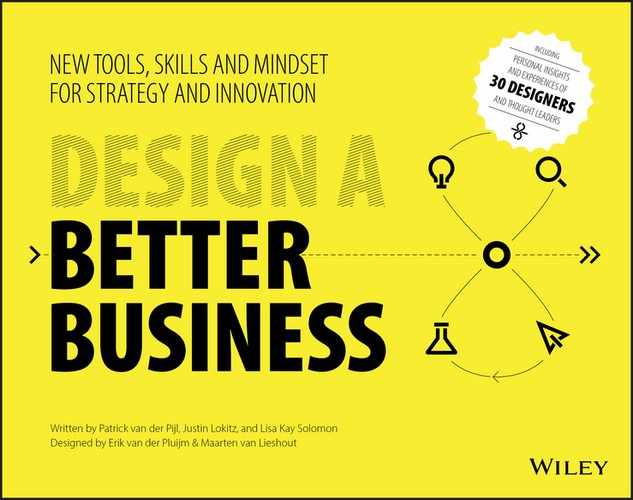Page 38
PREPARE HOW YOU WORK (TOGETHER)
You’ve put together a team and secured an environment to work together in. Now it’s time to actually work together, efficiently and effectively. To achieve the best results as a team while continually staying on the same page, you’ll need some design tools.
THE DESIGNER’S ESSENTIALS
There’s a very good reason designers and creative types carry around sticky notes and big permanent markers. Sticky notes are expendable, additive, stick to anything, and have the added value of being constrained by size, while permanent markers are, well, permanent, and make what’s represented on each sticky note more readable. Hand stacks of each of these tools to everyone and let the ideas fly. By the end of the day you should have a wall of ideas and a floor piled high with half-starts. You get bonus points for getting everyone to draw their points of view (visually) on sticky notes. For some simple sketching tips, check out the profile on Dan Roam, in the prototyping chapter.
More about sketching and visual thinking PAGE 172
FRAME DISCUSSIONS USING A CANVAS
In just about every chapter of this book you’ll find canvases, like the Business Model Canvas, Value Proposition Canvas, as well as others that can used for visioning, storytelling, validating, etc. These visual artifacts will help spark interesting conversations while framing the ensuing discussions.
These tools are not tools to be filled out and put away. As essential design tools, the canvases provided here are also living, breathing records that document your design journey. When you pair people, sticky notes, markers, and sketching, not only will the design process be faster and easier, you’ll get much better results and learn to speak in a new shared language.
BETTER MEETINGS VIA SCREENPLAYS
Meetings have become a (bad) habit for most large organizations. In fact, this habit extends to the way we work: we sit behind our desk working independently from others. We send lots of email. We make a few phone calls. And when we’re not sitting at our desks, we’re in meetings.
Meetings are not necessarily bad, but more often than not, they are simply planned – not designed. In turn, nothing really happens at the meetings we show up to. There is no clear structure. What’s the purpose of this meeting? Who is in the room? How do we make sure we get things done in this time slot? How do we know what is expected from us in this meeting? Those questions rarely get asked – and all the while, we have rooms full of people wasting time, resources, and energy.
Page 39
TIP! Have a walking meeting. When walking or standing up, not only is the body more mobile, but so is the mind. It is much harder to become entrenched in an argument when you are mobile.
What’s more, using meetings to share information is also a waste of time. Meetings are more often social and political. We feel badly if we exclude colleagues when sending invites for a meeting. Instead of thinking about who are the right people to be in the room, we think about who we don’t want to exclude. Not having the right people in the room – or having too many people in the room – leads to slow progress. This wastes everyone’s time.
The key to good meetings – and even better workshops – is to create a screenplay. Not to be confused with an agenda, a screenplay details who will work on what when. Most notably, it will help you design a meeting based on the results you wish to achieve. ![]()
IMPROVISE LIKE A CHAMP
After I speak on stage or appear on television and radio shows, people often approach me and say, “You make it look so easy, as if you improvise on the spot! How do you do that?”
The answer is simple. It takes time. I invest a lot of time in my screenplay. Why? You are responsible for designing the flow of an event. When you go through it step by step, you feel where you need to give more energy, where you need to go slow or go fast, and where you can go in deeper.
Once you have a clear path and target in mind, you can take crossroads. In other words, once you get the basics right, you’ll find places where you can improvise. A screenplay forces you to think about how you cut your message into digestible pieces and how you design for energy and interaction from the audience.
A message well sent is a message well received. Facilitate the receiver and work with a screenplay!

Rens de Jong
Moderator, Radio & TV Anchor,
Entrepreneur
